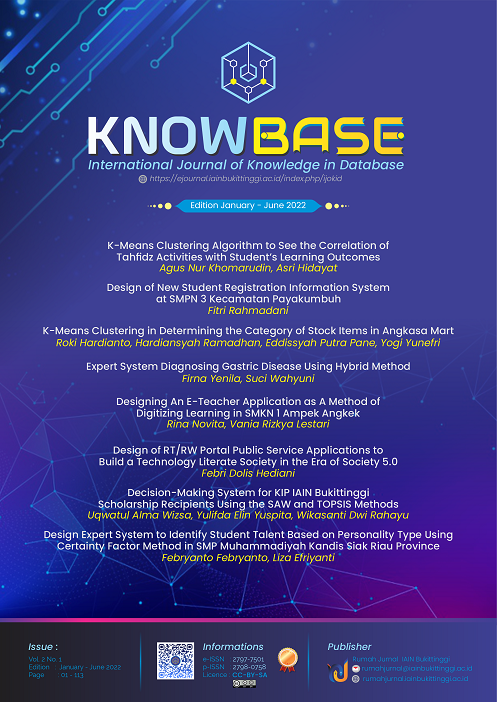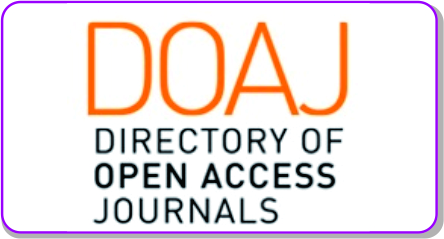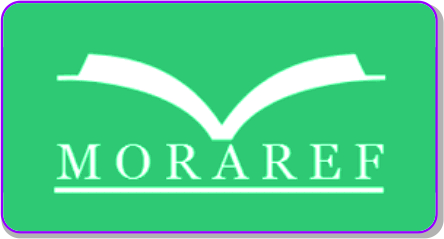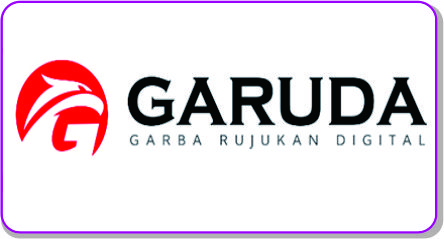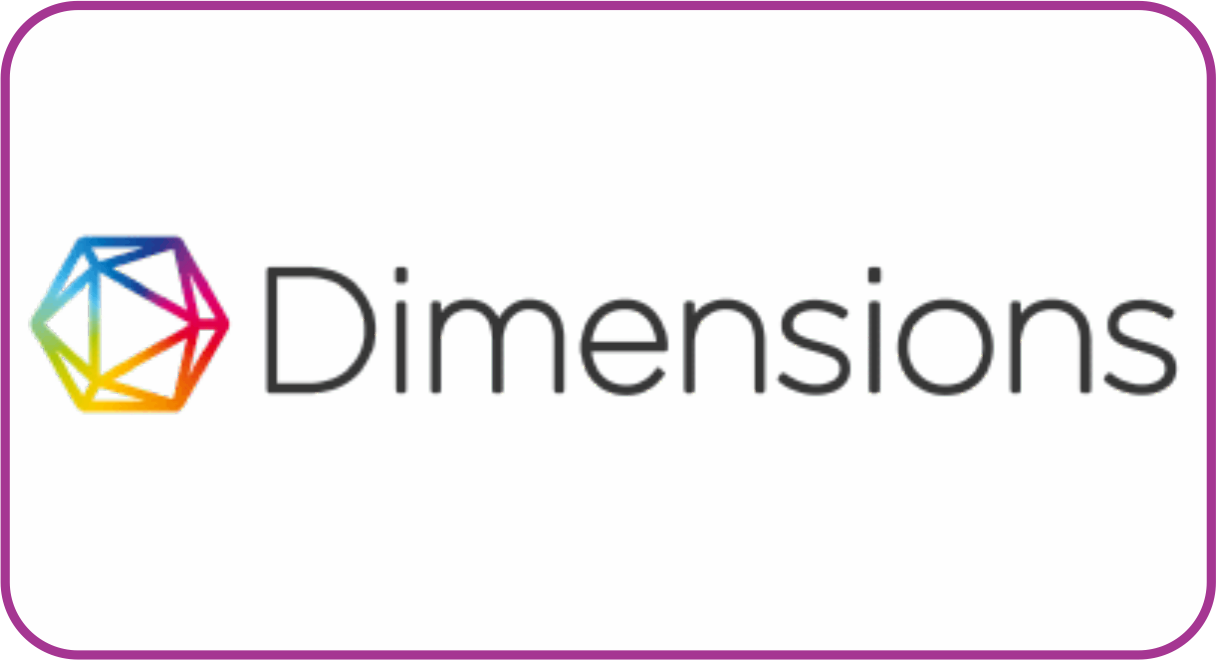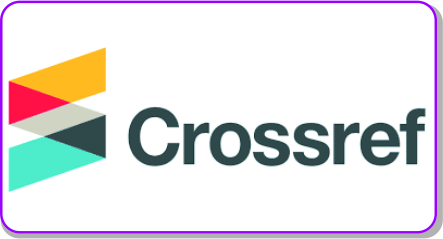Design of RT/RW Portal Public Service Applications to Build a Technology Literate Society in the Era of Society 5.0
DOI:
https://doi.org/10.30983/ijokid.v2i1.5674Keywords:
Application Portal Rw, API, SDLC, Society 5.0Abstract
The role of RT/RW administrators is not only as administrative public servants but also as a servant to the interests of the wider community. Therefore, their role needs to be optimized so that the aspirations of the citizens can be accommodated. However, the large area and dense population often make RT/RW administrators constrained in accelerating access to services and increasing the effectiveness of their activities. The role of information technology is very important, considering that the use of technology has been proven to be successful in improving public services. The utilization of an existing information system is not necessarily in accordance with the needs and related regional policies. In this study, the development of a system adapted to the needs and regional policies, especially in Sekeloa Village, Coblong District, Bandung City was carried out. An RT/RW Portal application was produced which has five main features, namely reporting events, invitations to activities, voting, transparency of funds, and printing reports. This application development method uses the SDLC (Software Development Life Cycle) method with stages of data requirements analysis, software design and design, application development (programming) and application testing before being implemented in RT-RW. The results obtained are in the form of an RW portal application that can assist the function and role of the RT/RW both in administrative management, as well as the dissemination of information in the form of news on activities surrounding the RT/RW. The conclusion is that the API of this application can be developed to build mobile.
Â
References
M. Fukuyama, “Society 5.0: Aiming for a New Human-Centered Society,†Japan Spotlight, pp. 47–50, Jul. 2018.
Utomo and Andalina, “Capacity Development of RukunTetangga/RukunWarga as ‘Grassroots’ Organizations in the Era of Widespread Decentralization,†Journal of Administrative Sciences, vol. 6, pp. 18–33, 2009.
Sutarmidji, “Pontianak City Regional Regulation Number 10 Year 2011 Concerning Neighborhood Associations (RT) and Residents Associations (RW)â€,†Pontianak, Oct. 2011.
N. Purwatmini, Shalahudin, and HS Yudiarso, “The Role of the Head of the RukunWarga as Servant Leader and Society for Success in Getting Infrastructure Development Projects",†UMA Journal of Public Administration, vol. 8(1), pp. 50–56, 2020.
M. Khafid and A. Wahyudin, “Preparation and Implementation of a Public Service System for Rt/ Rw Online Cover Letter to Realize a ‘Smart City’ Semarang,†Engineering Journal, vol. 16(20), pp. 209–218, 2018.
Public Relations, “President: Our Priority is to Prevent the Spread of Covid-19 More Wider,†https://setkab.go.id/ppresi-prioritas-kitatangan-penyebaran-covid-19-more- broad-again/.
Sarmidi, EDS Mulyani, RA Wiyono, and Gunawan, “Citizen Information System (Simwarga) Web-Based RT/RW Level,†National Seminar on Community Service (SNPMas), pp. 447–454, 2019.
RA Sukamto, Software Engineering Structured and Object Oriented. Bandung : Informatics, 2015.
Indrajani, Database Design (Case Study All in One). Jakarta : PT Elex Media Komputindo, 2015.
“Definitive Guide For Yii 2.0,†https://www.yiiframework.com/doc/guide/2.0/id/intro-yii.
U. Hanifah, R. Alit, and Sugiarto, “Using the Black Box Method in Testing Outgoing Mail Information Systems,†SCAN, vol. XI (2), pp. 33–40, 2016.
MQ Khairuzzaman, “Analysis and Design of Electronic Customer Relationship Management Information Systems(e) -Crm) PT Delta Jaya Motor Singkawang,†Journal of Equator Informatics, vol. 4, pp. 220–224, 2016.
A. Lubis, Basic Database for Computer Science Students. CV. Main Budi, 2016.
Downloads
Additional Files
Submitted
Accepted
Published
Issue
Section
License
Authors who publish with this journal agree to the following terms:
- Authors retain copyright and grant the journal right of first publication with the work simultaneously licensed under a Creative Commons Attribution License that allows others to share the work with an acknowledgment of the work's authorship and initial publication in this journal.
- Authors are able to enter into separate, additional contractual arrangements for the non-exclusive distribution of the journal's published version of the work (e.g., post it to an institutional repository or publish it in a book), with an acknowledgment of its initial publication in this journal.
- Authors are permitted and encouraged to post their work online (e.g., in institutional repositories or on their website) prior to and during the submission process, as it can lead to productive exchanges, as well as earlier and greater citation of published work (See The Effect of Open Access).

